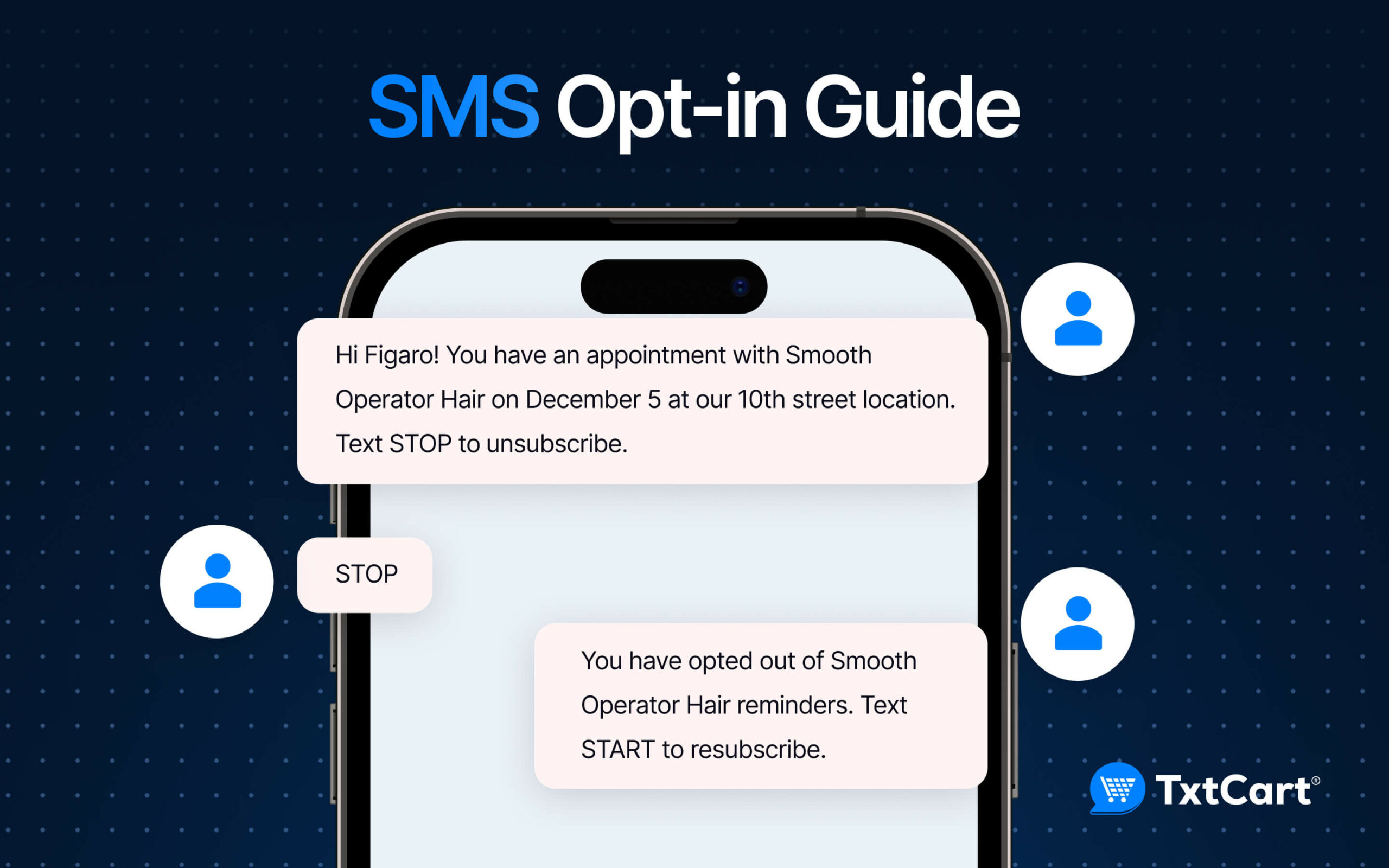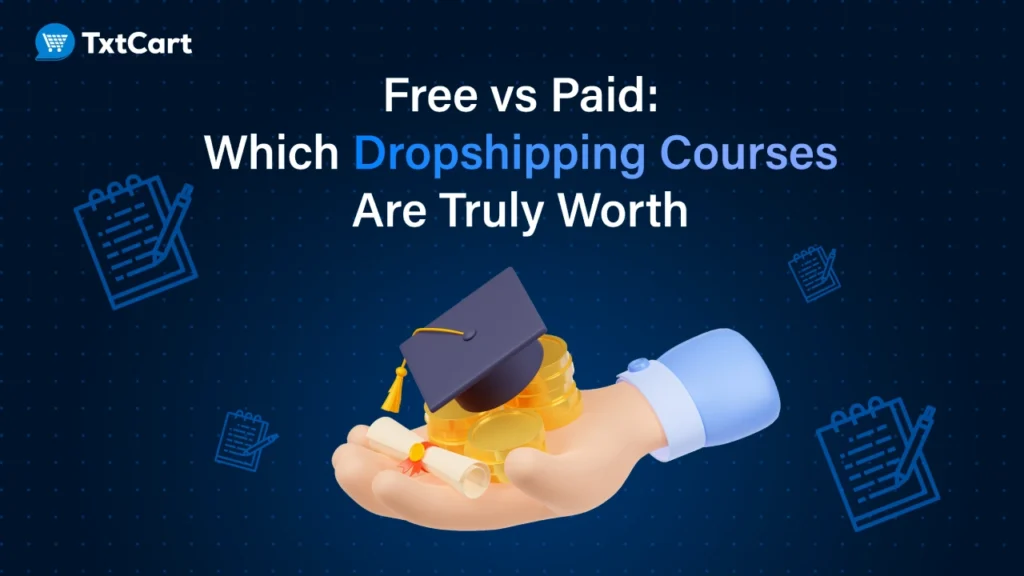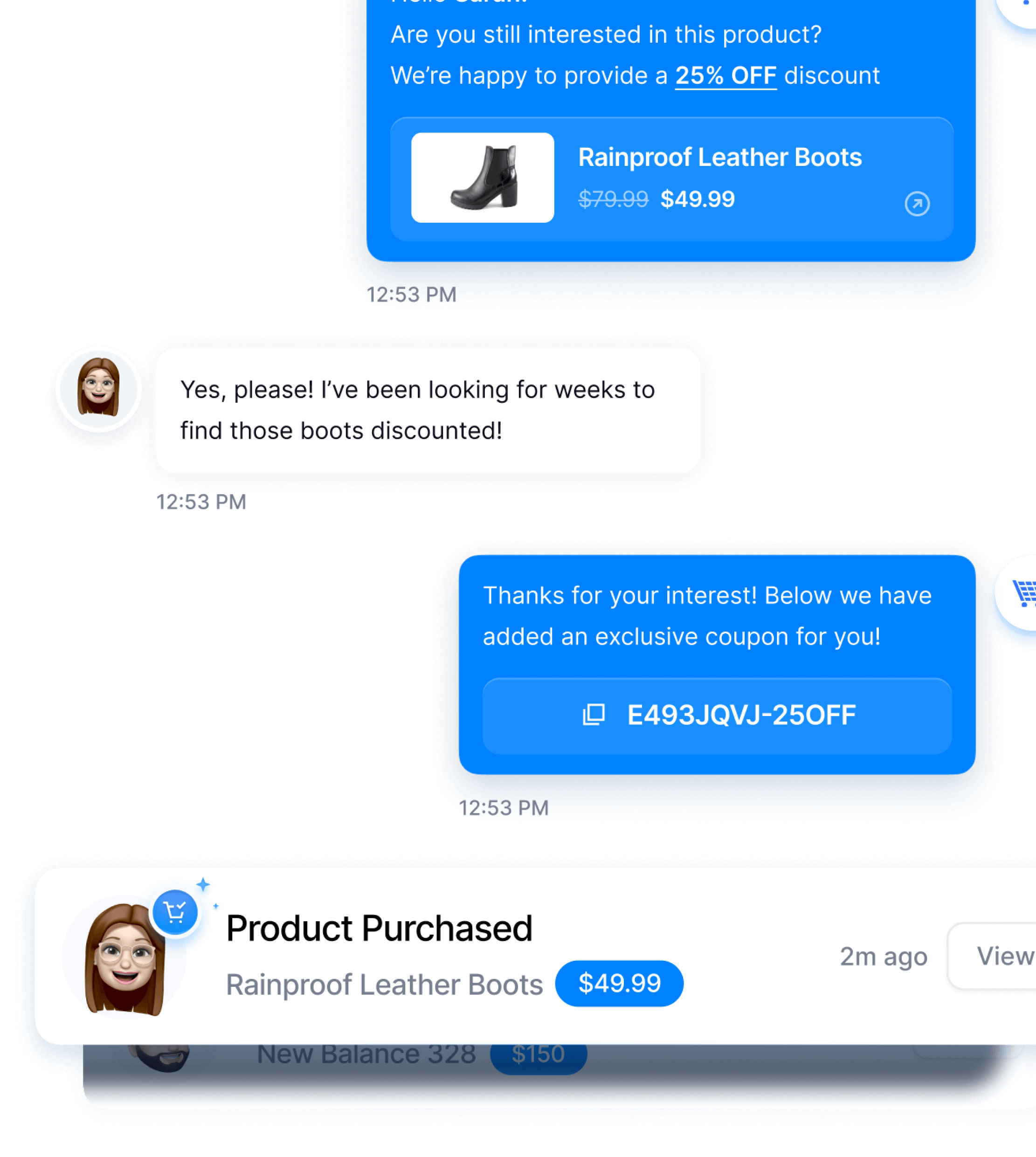Did you know that SMS messages boast a staggering 98% open rate, often within minutes? Yet, many businesses struggle to build their SMS list effectively and compliantly, leaving massive engagement and revenue on the table. Navigating the world of SMS opt-in can feel like a minefield of regulations and best practices, but getting it right is the bedrock of any successful SMS marketing strategy.
This guide will show you how to:
- Master SMS compliance to build trust and avoid penalties.
- Craft high-converting opt-in messages and forms.
- Implement proven strategies to grow your SMS subscriber list rapidly.
TL;DR
- Prioritize Compliance: Understand TCPA, GDPR, and other regulations for SMS opt-in. Express written consent is key.
- Optimize for Conversion: Use clear value propositions, compelling CTAs, and user-friendly opt-in forms. Double opt-in is often best.
- Diverse Collection Methods: Leverage website pop-ups, text-to-join keywords, QR codes, and social media to collect SMS opt-ins.
- Stay Ahead: Embrace AI, personalization, and rich messaging formats for future SMS opt-in success.
Types of SMS Opt-in Methods
You have a few ways to collect SMS opt-ins, each with its own set of advantages and considerations. Understanding these methods helps you choose the best fit for your audience and compliance needs.
Here are the primary types:
- Single Opt-in: This is a one-step process. A user provides their phone number via an online form or by texting a keyword, and they are immediately added to your SMS list. It’s quick and reduces friction.
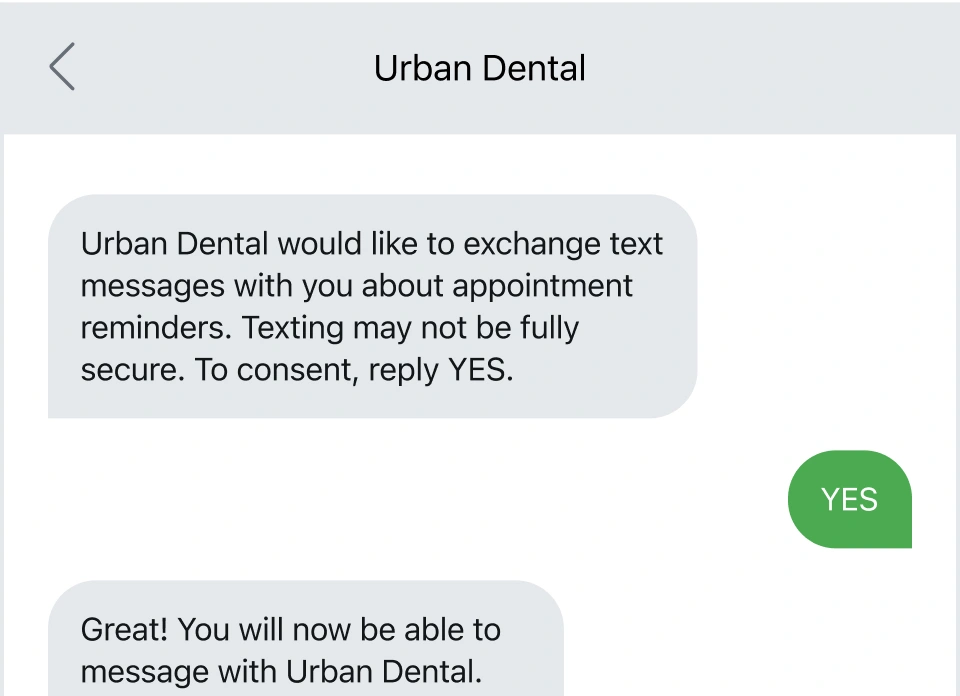
- Double Opt-in: This involves a two-step confirmation. After the initial opt-in, the user receives a confirmation message via SMS and must reply (e.g., with “YES”) to confirm their subscription. This method ensures a higher quality list and is often recommended for better compliance.

- Soft Opt-in: This permits businesses to send marketing messages to customers who have previously purchased from them without needing explicit consent each time, provided the communications relate to similar products or services. This approach is particularly beneficial for businesses with repeat customers, like retail stores or subscription services, allowing them to stay connected while complying with regulations.
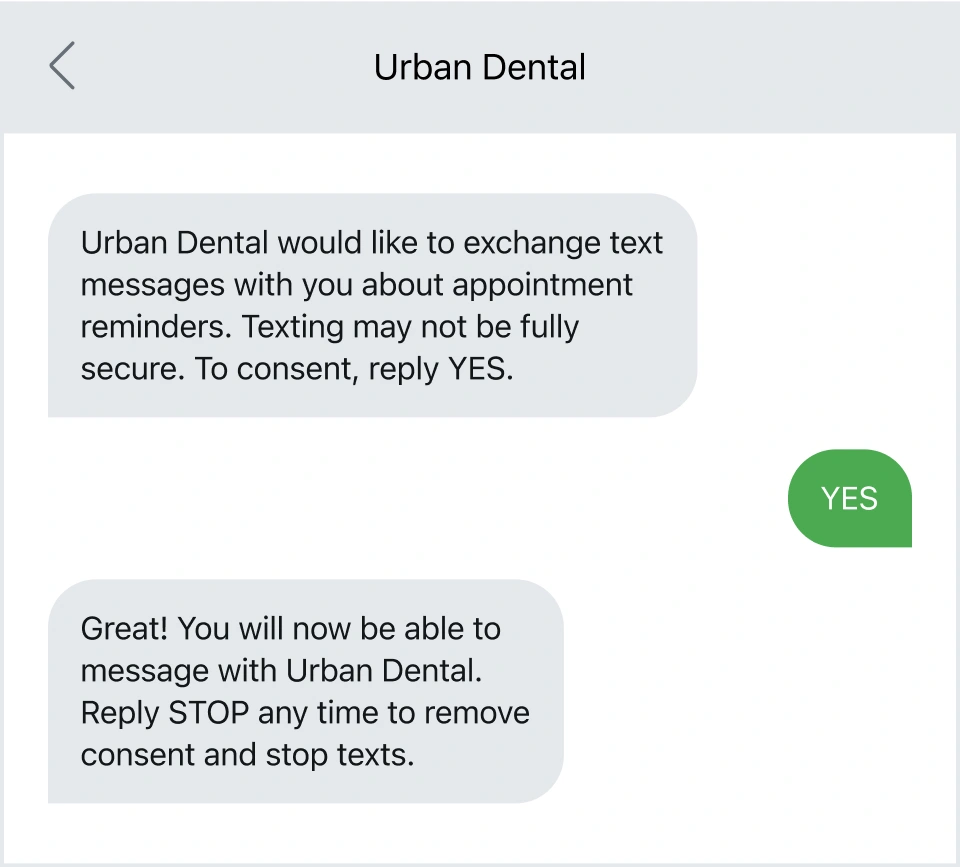
Here’s a quick comparison:
| Feature | Single Opt-in | Double Opt-in | Soft Opt-in (for marketing) |
|---|---|---|---|
| Ease of Use | Very Easy | Easy | Moderate (requires existing relationship) |
| List Quality | Good | Excellent | Variable |
| Speed | Fastest | Slower | Fast (for existing contacts) |
| Compliance | Good (if clear consent language) | Best (strong proof of consent) | Requires careful legal review |
Looking to implement opt-in methods seamlessly? TxtCart supports flexible SMS opt-in flows, including straightforward single opt-in and robust double opt-in mechanisms, helping you build a compliant and engaged SMS subscriber list with ease.
10 Best SMS Opt In Message Examples
Here are some examples of SMS opt-in strategies used by businesses:
1. Keyword Opt-Ins

You text a specific keyword to a designated number to subscribe or receive information. It’s the most effective method as users retain information better. For example, on a billboard, texting “house” to the number associates “house” with “shire” whenever it’s mentioned.
2. Pop-Up Web Forms
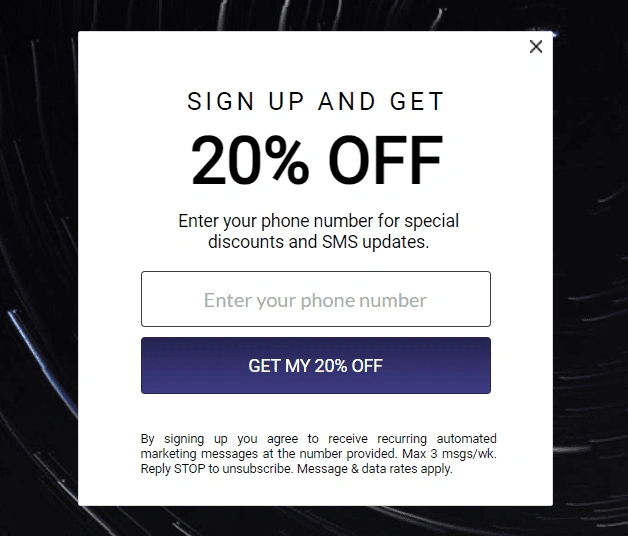
Pop-up web forms are a dynamic way to capture SMS opt-ins by presenting users with a timely, eye-catching message while they browse your site. These forms can offer incentives like discounts or exclusive content to encourage sign-ups. For best results, keep the form simple, easy to dismiss, and relevant to the visitor’s interests or behavior.
3. Checkout Opt-ins
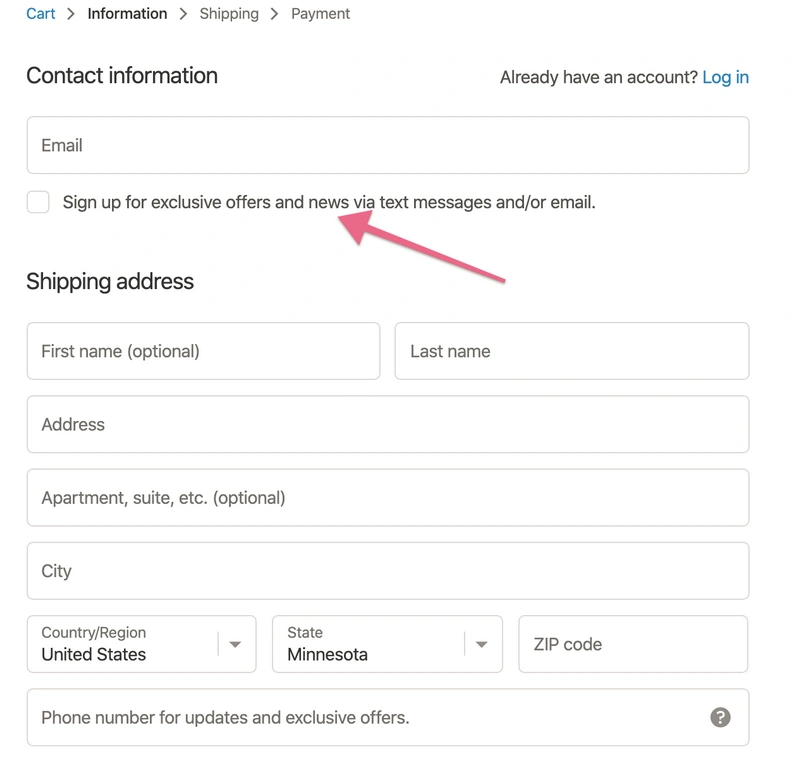
Checkout opt-ins allow customers to subscribe to SMS alerts or promotions during their purchase, enhancing engagement and convenience. To increase check out opt- in offer the benefits clearly, simplify the process, offer incentives, ensure it’s optional, and use straightforward language.
4. QR Code Opt-Ins
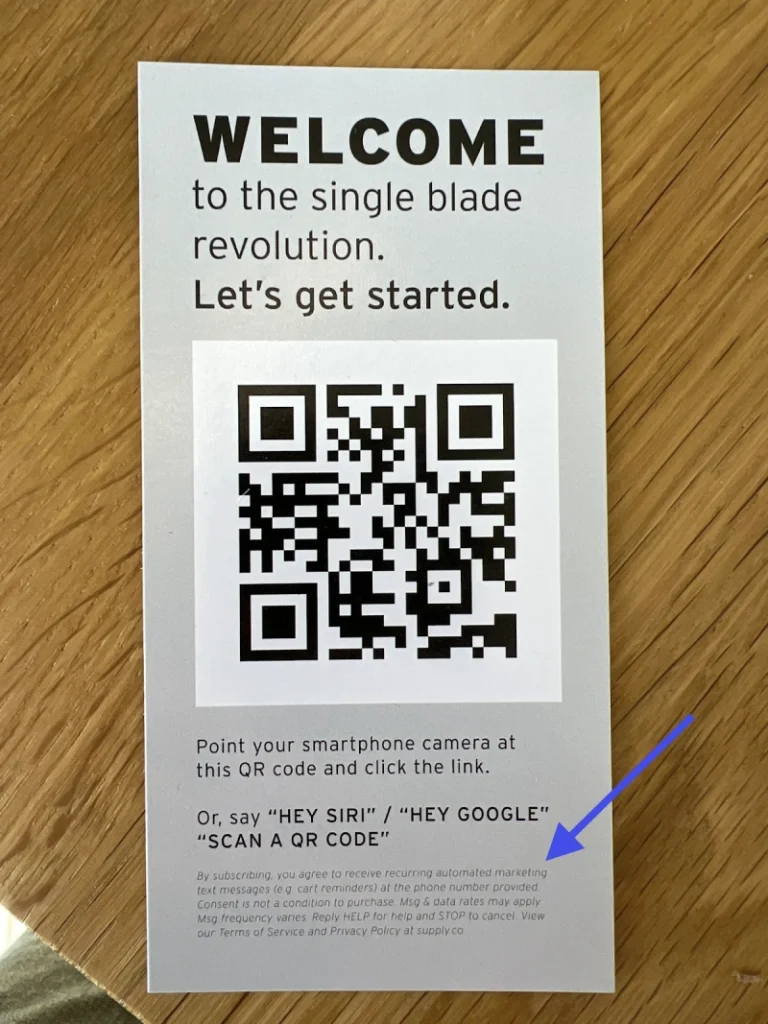
QR Code Opt-ins use scanned codes for subscription or information. They’re effective for quick access. Create by generating QR codes linked to subscription pages using online QR code generators or specialized software.
5. CTA Opt-Ins
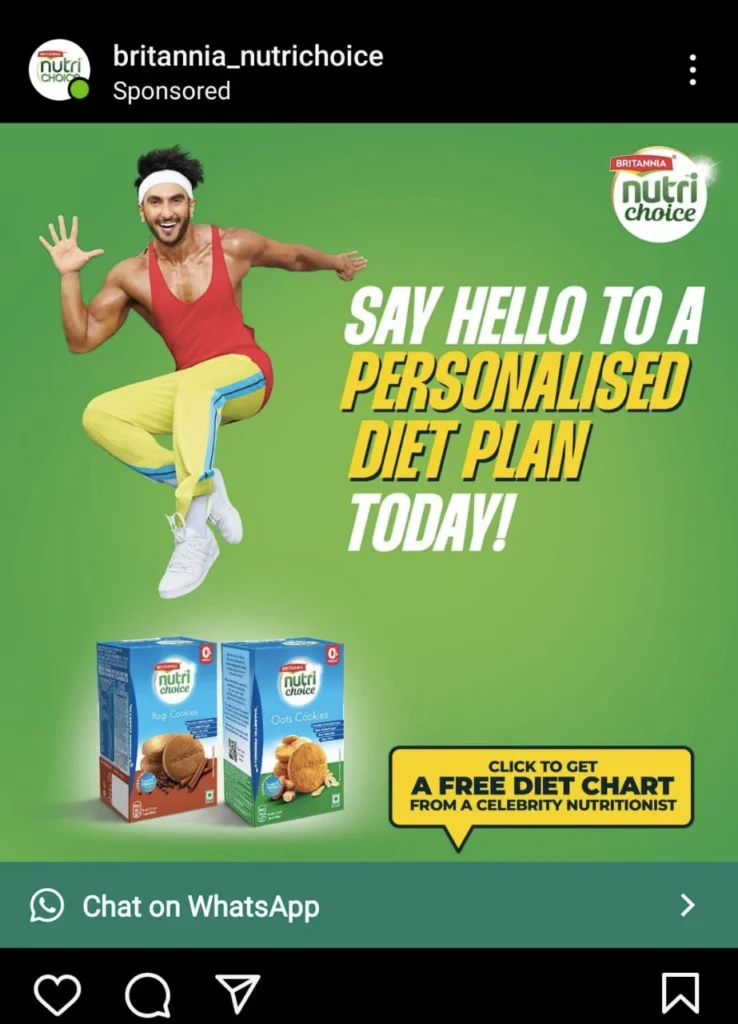
Call-to-action opt-ins allow users to subscribe through compelling messages. They’re effective for instant engagement. Create them with clear, action-oriented language, strategically placed buttons on websites or ads, and link them directly to WhatsApp or to subscription forms or pages for a seamless user experience.
6. Keyword Opt-In
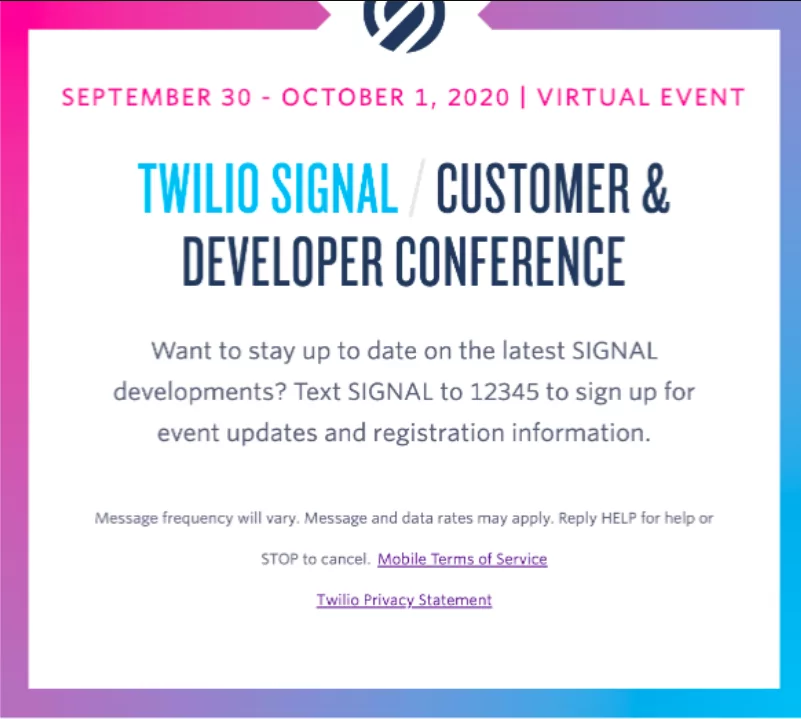
Keyword opt-ins encourage users to text a unique keyword tied to a specific marketing campaign or event. This method helps segment subscribers based on their interests, allowing for more personalized messaging. For example, a summer sale campaign might use the keyword “SUMMER20” to track engagement and send targeted promotions.
7. Web Form Opt-In
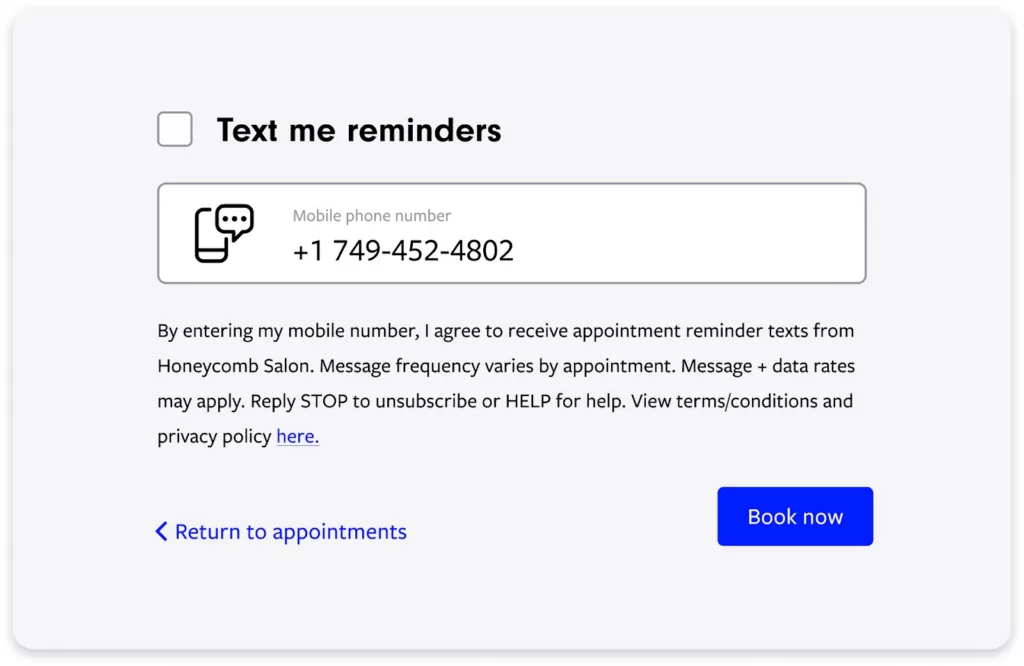
Web form opt-ins are classic and effective, allowing visitors to enter their phone numbers directly on your website. These forms can be embedded on landing pages, blog posts, or dedicated subscription pages. Including a clear value proposition and privacy statement boosts trust and increases the likelihood of opt-in.
8. Paper Form Opt-In
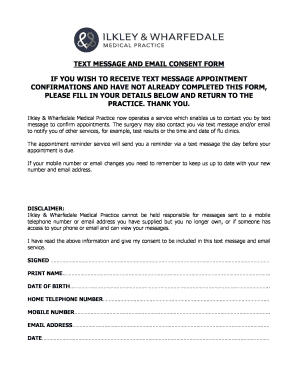
Paper form opt-ins might sound old-school but remain effective in physical locations like retail stores or events. Customers provide their phone numbers on printed forms in exchange for rewards or information. This method builds a quality subscriber list with engaged customers who’ve interacted with your brand offline.
9. Footer Form Fill Opt-In Example
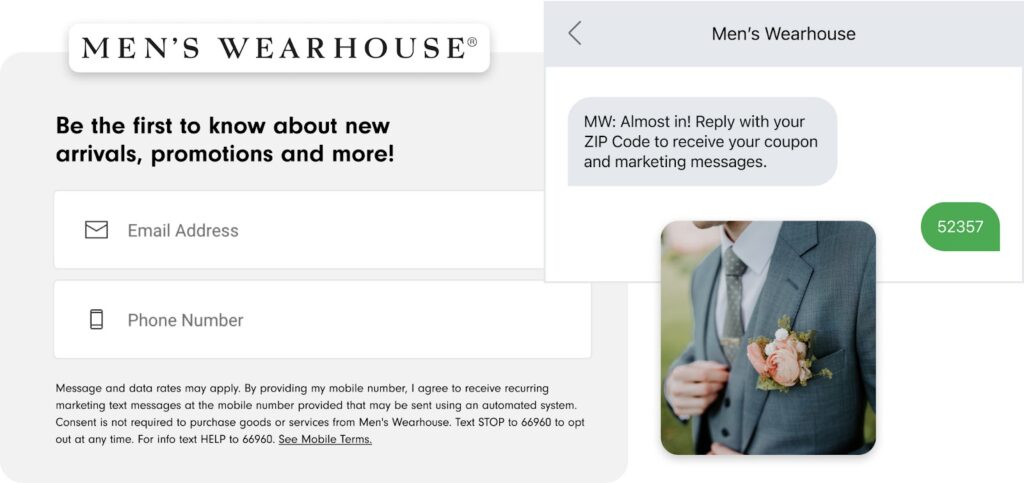
Footer form fill opt-ins are subtle yet consistent opportunities for visitors to subscribe. Placing a simple opt-in form in the footer of your website ensures it’s accessible on every page without disrupting user experience. It’s perfect for capturing casual visitors who may decide to subscribe after exploring your content.
10. Checkbox Opt in Form
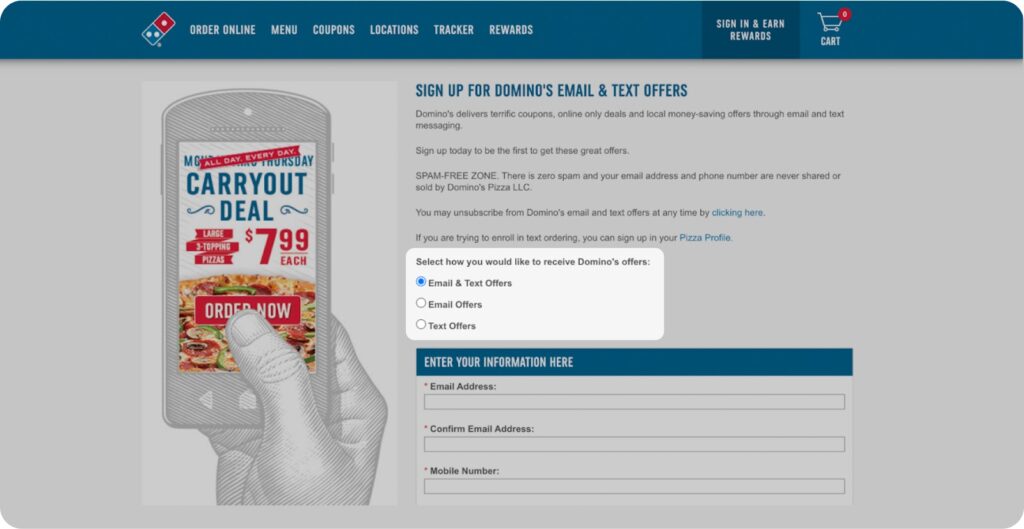
Checkbox form opt-ins appear during checkout or account creation, asking customers to opt in for SMS updates. This method respects user choice by making opt-in optional, and it’s highly effective because it captures engaged customers already interacting with your brand. Clear language about messaging frequency and consent ensures transparency and compliance.
But opt-in is just the start—keeping customers engaged is the real challenge. Unlike traditional SMS platforms that send robotic, one-way messages, TxtCart’s conversational approach enables two-way, human-like conversations from the moment subscribers join.
Whether it’s recovering abandoned carts or answering customer questions in real-time, TxtCart drives better engagement—all while costing 32 times less than a human agent. This makes it a powerful tool to nurture lasting customer relationships through SMS.
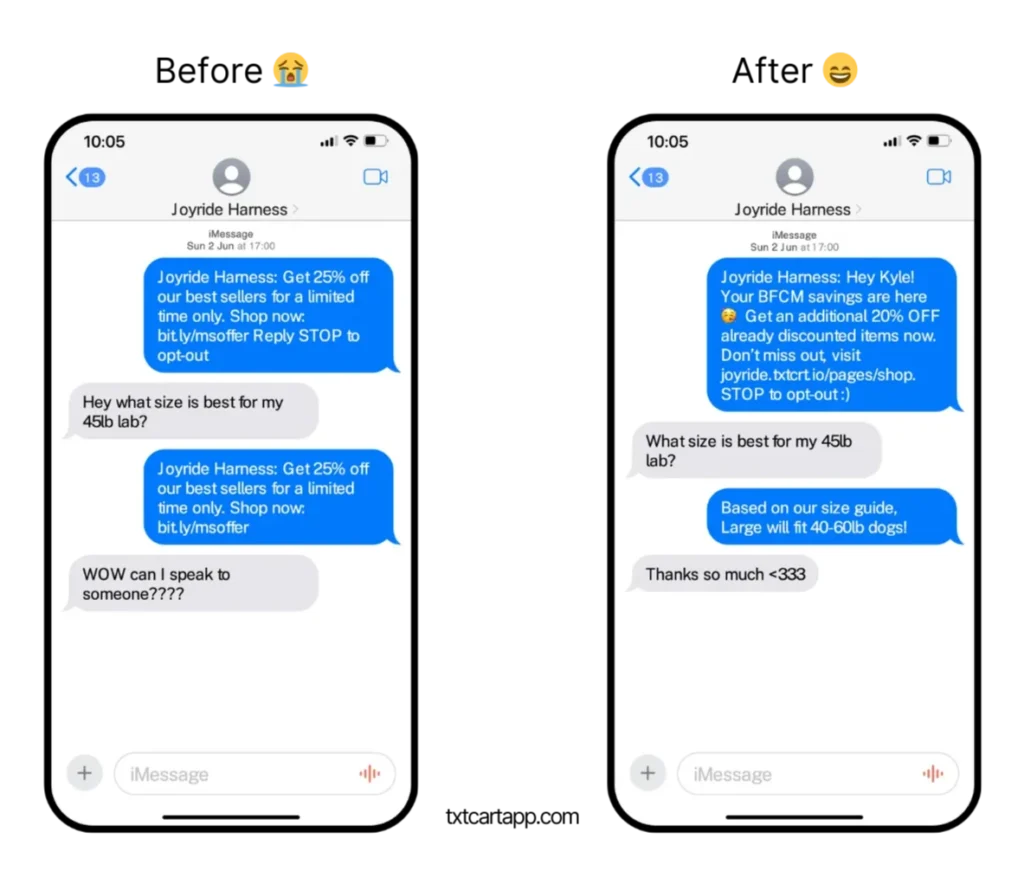
SMS Marketing Compliance in 2025: What You Need to Know
Navigating the legal landscape of SMS marketing is crucial. Non-compliance can lead to hefty fines and damage your brand’s reputation. Let’s break down the key regulations.
Understanding and adhering to SMS compliance rules isn’t just about avoiding penalties; it’s about building trust with your audience. When customers know you respect their privacy and choices, they’re more likely to engage with your marketing messages.
TCPA Compliance Requirements
The Telephone Consumer Protection Act (TCPA) is a cornerstone of SMS marketing regulation in the United States. It governs how businesses can communicate with consumers via text.
Key TCPA requirements include:
- Express Written Consent: You must obtain express written consent before sending promotional text messages. This consent must be unambiguous and clearly state that the user agrees to receive messages from your brand, including marketing messages. This can be obtained via a website form, a physical form, or even a text message response to an SMS keyword.
- Clear Disclosure Requirements: Your opt in text message or form must clearly disclose:
- That the user is agreeing to receive automated marketing texts.
- That consent is not a condition of purchase.
- How to opt out (e.g., “Text STOP to unsubscribe”).
- That message and data rates may apply (e.g., “Msg & data rates may apply”).
- The expected message frequency (e.g., “Msg frequency varies” or “Approx 4 msgs/mo”).
- Record-Keeping Obligations: You must maintain records of consent, including the date, time, and method of opt-in. This is crucial if you ever need to prove you obtained proper consent.
- Opt-Out Mechanisms: Provide a clear and easy way for users to opt out of receiving further messages at any time. Common methods include texting keywords like “STOP,” “END,” “CANCEL,” “UNSUBSCRIBE,” or “QUIT.” Ensure your system processes these requests automatically and promptly.
GDPR Compliance for SMS Marketing
If you’re marketing to individuals in the European Union, the General Data Protection Regulation (GDPR) applies to your SMS practices, even if your business isn’t based in the EU.
GDPR emphasizes:
- Explicit Consent Requirements: Similar to TCPA’s express written consent, GDPR requires clear, affirmative consent. Pre-checked boxes or bundled consent are not acceptable. The consent must be specific to receiving SMS marketing messages.
- Data Processing Transparency: You must clearly inform users how their data (including their phone number) will be collected, used, and stored. This information should be easily accessible, typically in your privacy policy.
- Right to be Forgotten Implications: Individuals have the right to request that their personal data be erased. You need a process in place to handle such requests for your SMS subscriber list.
Other Regional Regulations to Consider
Compliance doesn’t stop with TCPA and GDPR. Depending on where your subscribers are located, other rules may apply.
Be aware of:
- CASL (Canada): Canada’s Anti-Spam Legislation has its own set of rules for sending commercial electronic messages, including SMS. It generally requires express consent and specific identification and unsubscribe information.
- CCPA/CPRA (California): The California Consumer Privacy Act (CCPA), as amended by the California Privacy Rights Act (CPRA), grants California consumers rights regarding their personal information, including the right to know what data is collected and the right to opt-out of its sale. While it doesn’t directly regulate SMS opt-ins like TCPA, it impacts how you handle subscriber data.
- International Considerations: Many other countries have their own data privacy and electronic communication laws. If you have a global audience, it’s wise to understand the regulations in the key markets you serve.
Compliance Checklist for 2025
Staying compliant can seem daunting, but a systematic approach helps. Use this checklist to ensure your SMS opt-in process meets key requirements.
| Requirement | Yes/No | Notes |
|---|---|---|
| Obtain Express Written Consent? | E.g., checkbox on form, keyword reply, clear affirmative action. | |
| Clear Opt-in Language Used? | States purpose (marketing texts), not a condition of purchase. | |
| Brand Identity Clear? | Your business name is prominent in the initial opt-in message. | |
| Message Frequency Disclosed? | E.g., “Msg frequency varies,” “Up to 4 msgs/month.” | |
| “Message and Data Rates May Apply” Visible? | Standard disclosure for mobile carriers. | |
| Clear Opt-Out Instructions Provided? | E.g., “Text STOP to cancel.” | |
| Privacy Policy & ToS Linked? | Accessible from the opt-in form or initial message. | |
| Consent Records Maintained? | Timestamp, source of opt-in, consent language shown. | |
| Double Opt-in Implemented (Recommended)? | Confirms intent and reduces errors. | |
| Regular Compliance Audits Conducted? | Periodically review your processes. |
BTW, TxtCart ensures full compliance by seamlessly including clear opt-out instructions (e.g., “STOP to opt-out”) in every message. This not only meets legal requirements but also builds trust with your customers by respecting their preferences and making it easy to unsubscribe at any time.
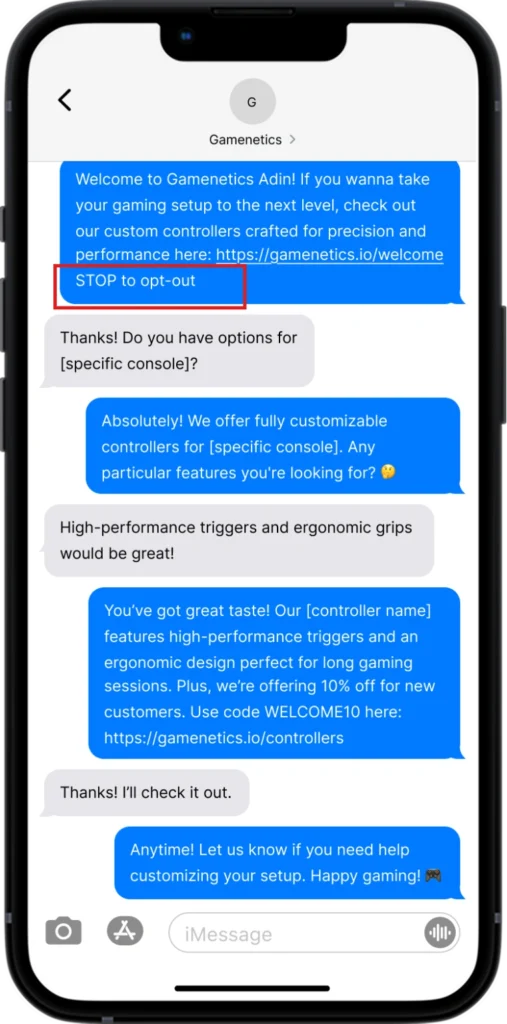
Read Next:
- TCPA Compliance Guide for SMS Marketing [+ Checklist]
- SMS Marketing Compliance 101: A Guide For Shopify Businesses
10 Ready-to-Use SMS Opt-in Templates for 2025
Need some inspiration? Here are versatile SMS opt-in templates you can adapt. Remember to always include your brand name and necessary compliance disclosures.
Single Opt-in Templates (e.g., for website pop-ups or forms)
Single opt-in is the simplest way to get subscribers by asking once for their consent. These templates work well for quick, easy sign-ups where you want to provide immediate value or create exclusivity.
1. Discount Offer
| Headline | Get 15% Off Your Order! |
|---|---|
| Body | Enter your phone number for exclusive deals and a 15% off code. Msg & data rates may apply. Reply HELP for help, STOP to cancel. Consent not required for purchase. |
| Why it works | Instant value plus clear, concise terms. |
2. VIP Club/Early Access
| Headline | Join Our VIP Text List! |
|---|---|
| Body | Be first to get flash sales and special offers from [Your Brand]. Msg & data rates may apply. Reply HELP for help, STOP to cancel. Consent not required for purchase. |
| Why it works | Creates exclusivity and urgency. |
Double Opt-in Initial & Confirmation Message Templates
Double opt-in requires users to confirm their subscription, helping ensure compliance and a high-quality list. These messages clarify intent and reduce accidental sign-ups.
3. Initial Text-to-Join Request
| Headline | Join Our SMS List! |
|---|---|
| Body | Text [KEYWORD] to 12345 to join [Your Brand] for exclusive offers! Msg & data rates may apply. Reply HELP for help, STOP to quit. |
| Why it works | Clear, memorable call-to-action. |
4. Double Opt-in Confirmation Reply
| Headline | Confirm Your Subscription |
|---|---|
| Body | [Your Brand]: Reply YES to confirm you want marketing texts. Consent not required for purchase. Msg & data rates may apply. Reply HELP or STOP to manage. |
| Why it works | Ensures subscriber consent, reducing accidental sign-ups. |
Confirmation Message Templates (After successful opt-in)
These welcome messages reinforce a positive subscriber experience by delivering incentives immediately or setting clear expectations for future messaging.
5. Welcome with Discount
| Headline | Welcome & Enjoy 15% Off! |
|---|---|
| Body | [Your Brand]: Welcome! Use code SAVE15 for 15% off. Stay tuned for deals. Msg & data rates may apply. Reply STOP to cancel. |
| Why it works | Rewards subscriber immediately and sets expectations. |
6. Welcome (No Initial Discount)
| Headline | Welcome to [Your Brand]! |
|---|---|
| Body | [Your Brand]: Thanks for joining! Expect exclusive updates and offers. Msg & data rates may apply. Reply HELP or STOP anytime. |
| Why it works | Friendly intro that builds trust. |
Templates for Different Industries (Examples)
Tailor your SMS opt-in messages to your industry to maximize relevance and appeal. Here are examples from fashion, food & beverage, salons, and event promotions.
7. eCommerce Fashion – New Arrivals
| Headline | Get New Arrivals & Style Tips |
|---|---|
| Body | Text STYLEUP to 12345 for new arrivals & style tips. Msg & data rates may apply. Reply HELP or STOP. |
| Why it works | Relevant and trendy messaging. |
8. Food & Beverage – Weekly Specials
| Headline | Weekly Specials & Event News |
|---|---|
| Body | Text TASTY to 12345 for weekly specials & events. Msg & data rates may apply. Reply HELP or STOP. |
| Why it works | Timely and appetizing. |
9. Salon – Appointment Reminders & Offers
| Headline | Appointment Reminders & Exclusive Offers |
|---|---|
| Body | Text SALONKEYWORD to 12345 for reminders & offers. Msg & data rates may apply. Reply HELP or STOP. |
| Why it works | Combines utility with promos. |
10. Event-Based – Event Updates & Early Bird Access
| Headline | Event Updates & Early Ticket Access |
|---|---|
| Body | Text EVENTGO to 12345 for updates & early tickets. Msg & data rates may apply. Reply HELP or STOP. |
| Why it works | Builds excitement and urgency. |
BTW, TxtCart’s AI copy assistant helps Shopify store owners write high-converting SMS marketing messages in minutes, ensuring compliance while maximizing opt-in rates. The tool can take the guesswork out of crafting compelling opt-in language and promotional SMS!
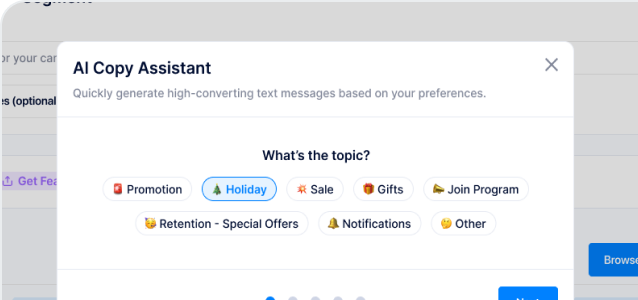
Read Next: 9 Conversational SMS Examples That Generated $6M+
SMS Opt-in Collection Methods: Where & How to Grow Your List
Knowing what to say in your opt-in message is half the battle; knowing where and how to ask for that opt-in is the other. A multi-channel approach to collecting SMS opt-ins will yield the best results.
Don’t limit your list-building efforts to a single touchpoint. The more opportunities you provide for users to subscribe, the faster your SMS marketing list will grow with engaged SMS subscribers.
Website Opt-in Strategies
Your website is prime real estate for capturing SMS opt-ins. Visitors are already engaging with your brand, making it a natural place to invite them to connect further.
Consider these effective website strategies:
Pop-ups and Forms Best Practices:
| Best Practice | Specific Details |
|---|---|
| Timing is everything | Trigger pop-ups after 15–30 seconds on page, once users scroll 50% down, or on exit intent (when cursor moves to close tab or back button). |
| Clear Value | Use compelling, specific offers like “Unlock 10% Off Your First Order!” or “Get Early Access to Sales.” Make benefits instantly clear to increase opt-ins. |
| Minimal Fields | Ask only for phone number and express written consent to receive marketing texts (e.g., “By providing your phone number, you agree to receive automated promotional messages. Msg & data rates may apply. Reply STOP to unsubscribe.”). Include first name to personalize messages. |
| Easy to Close | Include a visible “X” or “No Thanks” button to close the pop-up easily on desktop and mobile. Ensure it doesn’t trap users or block content. |
| Mobile-Friendly | Use responsive design that adapts to screen sizes from 320px (small phones) up to 768px (tablets). Make buttons at least 44×44 pixels for easy tapping. Avoid full-screen pop-ups; use small banners or modals that don’t cover the entire screen. |
| Landing Page Optimization | Create dedicated SMS sign-up landing pages with clear headlines, benefits, privacy info, and opt-in fields. Drive traffic from social, email, paid ads, or blog posts for maximum reach. Include testimonials or social proof to build trust. |
In-Store and Offline Collection Methods
If you have a physical presence or interact with customers offline, don’t miss these opportunities to grow your SMS list.
Effective offline methods include:
| Offline Method | Details |
|---|---|
| QR Codes Usage | Place QR codes on signage, receipts, product packaging, or at events. Scanning leads to an online opt-in form or pre-fills an SMS with your text-to-join keyword and shortcode. Example: “Scan to get 10% off your next purchase & join our text list!” |
| Text-to-Join Keywords | Promote a simple, memorable SMS keyword (e.g., “Text DEALS to 12345”) in-store, on flyers, event materials, or radio/podcast ads. Ensure the keyword is relevant and easy to recall. |
| Point-of-Sale (POS) Integration | Train staff to ask customers at checkout if they want to opt in for SMS alerts and offers. Some POS systems can directly capture phone numbers. Always obtain express written consent, recorded via a checkbox on payment terminals or signed forms. |
Social Media and Cross-Channel Promotion
Leverage your existing audiences on other channels to funnel them into your SMS program.
Cross-channel strategies include:
| Cross-Channel Strategy | Details |
|---|---|
| Instagram/TikTok Strategies | Use your “Link in Bio” to direct followers to your SMS opt-in page. Run giveaways requiring SMS opt-in, use swipe-up links or polls in Stories to engage users, and promote your text-to-join keyword in posts and videos for easy sign-up. |
| Email List Cross-Promotion | Include CTAs like “Text JOIN to 12345 for exclusive deals!” in emails. Highlight benefits such as instant flash sale alerts, early access, and mobile-only discounts to encourage sign-ups. |
| Paid Advertising for List Building | Run targeted Facebook, Instagram, or Google ads directing users to your SMS sign-up page. Emphasize quick sign-up and exclusive offers to maximize conversions. |
Read Next:
- 15 Ways to Grow Your SMS List (No One Talks About #3)
- 11 Types of Discounts to Use in SMS Marketing Campaigns to Drive More Sales
Ready to Supercharge Your SMS List Growth with TxtCart?
Mastering SMS opt-in for 2025 isn’t just about following rules; it’s about building valuable relationships with customers who want to hear from you.
Here’s what to focus on:
- Prioritize robust compliance with TCPA and GDPR using clear opt-in language and methods like double opt-in.
- Craft compelling value propositions and use diverse collection methods, from website forms to text-to-join keywords.
- Continuously measure, test, and optimize your opt-in forms, incentives, and timing using frameworks like the SOEF.
- Stay ahead of trends like AI-driven personalization and richer messaging formats to keep your strategy fresh.
If you want to skip sending SMS blasts and provide a human touch with your SMS marketing, TxtCart is what you need.
With TxtCart, you can increase SMS opt-ins by automating campaigns for subscribers to ensure your messages reach your customers. Plus, with real-time replies from our live agents, you can offer a holistic customer experience.
Want to try conversational SMS for free?
Drive more sales with intelligent AI-driven automations that recover carts, engage customers, and streamline flows — saving you 32x in costs. No contracts or minimums.
- Try free for 14 days
- 10x ROI guaranteed
- Join 3000+ Shopify brands
